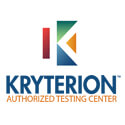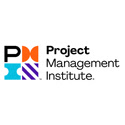CompTIA Security+ 2017
About This Course
CompTIA certified Security+ course is a globally acknowledged IT training that validates vendor relevant IT security knowhow, fundamentals and skills. The course covers essential concepts of network risk management and security as a touchstone validating best practices in the IT security domain. CompTIA Security+ serves as a critical stepping-stone of an individual’s IT security profession.
Today, IT security sits at the top priority list of every organization’s IT strategy, since mobile and cloud technology have drastically transformed the way we have been doing business. With the humungous volumes of data being generated, transmitted and stored on both cloud and on-premise networks all across the world, it is imperative to have proper security protocols in place. This is where CompTIA Security+ comes into the picture. Yes, the Security+ certificate validates a candidate’s skillfulness and shrewdness in managing network and security.
Who Should Attend This Course
CompTIA Security+ is aimed at anyone, who intends to secure a job as an IT security expert or is looking to hone his/her network security skills. Moreover, the course is perfect for anyone interested in cybersecurity.
The course is just perfect for CIO or IT managers, who wish to extend their IT security knowhow.
Why This Course
Organizations across the world are startled by a range of cybersecurity attacks, which is the reason an increasing number of businesses are fortifying their IT security game plan. With the monstrous amount of data that businesses are generating, storing and transmitting, it is important than ever to have robust security practices in place. This brings into light CompTIA Security+ certification course, which validates that the candidate is skilled enough to manage security and network threats.
A CompTIA Security+ certified professional can handle:
- Cryptography
- Network security
- Security risks and threats
- Operational and compliance security
- Host, data and application security
- Cloud, wireless and mobile security
- Identity management and control
Did you know that experts with CompTIA Security+ certification earn an average salary of around $81,467 / annum. (source: itcareerfinder.com)
Course Objectives
CompTIA Security+ certification course covers all things network and security:
- Network security
- Security threats
- Compliance security
- Data and application security
- Cryptography
- Risk management
- Mobile security
Prerequisites
Prior understanding of IT administration and security is recommended for candidates intending to take up this course.
Course Benefits
Post the completion of course, you will be able to manage:
- Network security
- Cryptography
- Operational and compliance security
- security risks and threats
- Host, data and application security
- Identity management and control
- Cloud, wireless and mobile security
Security+ certified experts can work as:
- Network administrator
- Security engineer or architect
- Security consultant





























